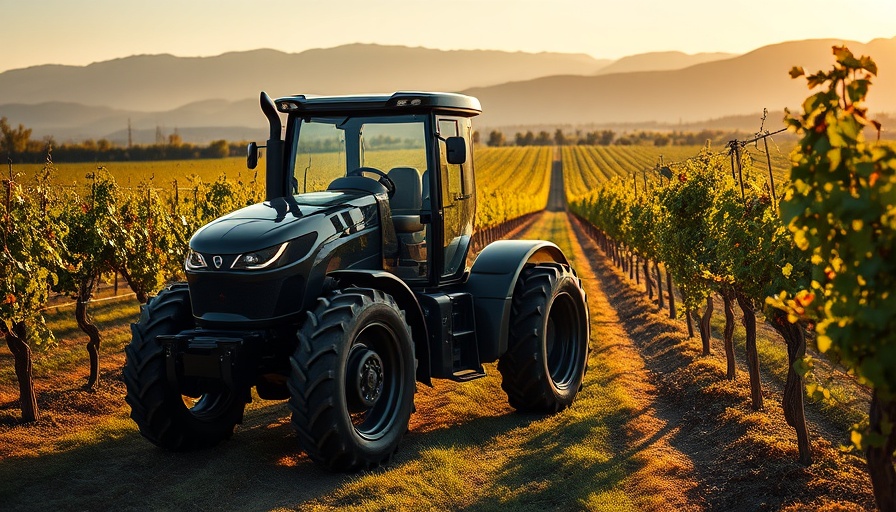
Dual-Use Technology: Bridging the Gap Between Agriculture and Warfare
At a time when technological advancements are reshaping industries, Spanish startup Voltrac has introduced a novel solution that speaks to the evolving needs of both agriculture and defense sectors. The company's autonomous tractor, capable of operating on farms and serving frontlines, exemplifies a significant shift towards dual-use technologies—tools designed for both civilian and military applications. Not only can this innovative vehicle assist farmers in optimizing crop management through advanced data analytics, but it also provides a safer method for resupplying troops in combat zones. This versatility poses intriguing questions about the intersection of technology with social responsibility and commercial viability.
Revolutionizing Rural Work and Warfare
The autonomous tractor from Voltrac carries a payload of 4,000 kg and navigates terrain at speeds of up to 40 km/h, powered by high-capacity batteries. Highlighting its utility, co-founder Francisco Infante Aguirre noted, "In Ukraine, many lives are lost in non-combat situations... our machine can make a difference." This sentiment resonates with a growing concern in global conflicts: safeguarding human lives while maintaining operational efficiency. The tractor’s switchable components enable quick transitions between agricultural and military tasks, demonstrating its functionality across varied environments.
The Future of Autonomous Farming
What sets Voltrac apart from other agricultural innovations is its emphasis on learning technology. Designed to conduct live experiments in real-time, the tractor adapts its farming strategies based on the immediate feedback it gathers. CEO Thomas Hubregtsen explained how this not only improves crop yields but paves the way for sustainable farming practices, reducing dependency on chemicals. Such advancements signal a potential shift towards greener technology solutions in agriculture, marrying efficiency with environmental stewardship.
Evolving Regulations and Ethical Considerations
As with any dual-use technology, the adaptation of agricultural machinery for military purposes raises ethical discussions around the ramifications of innovation. Will autonomous tractors be perceived more as tools for life-enhancing or life-claiming missions? Voltrac’s design provides room for debate about the ethical implications of employing civilian technologies in warfare. As NATO shows interest in such systems, the dialogue surrounding regulations under which these vehicles can operate becomes paramount. It begs the question: how can we ensure that such tools are used responsibly and ethically?
Practical Implications for Executives and Companies
The entry of corporations into dual-use technology exemplifies an important trend for executives in sectors undergoing digital transformation. As they navigate complex ecological and operational landscapes, understanding the value and potential of AI-enabled machinery becomes crucial. Decision-makers must assess the implications of adopting such technologies, including supply chain efficiencies, risk management, and collaboration with regulatory bodies. In an age where digital solutions are rapidly evolving, integrating AI into both agricultural practices and defense strategies could redefine competitive edges across industries.
As we reflect on the interplay between innovation and ethical responsibility, the development of dual-use technologies like Voltrac's tractor spotlights the need for informed leadership and proactive engagement. It challenges executives to reconcile growth objectives with sustainability and ethical considerations while leveraging technological advancements in a responsible manner. The future may depend on the choices made today regarding the deployment of these groundbreaking technologies.
 Add Row
Add Row  Add
Add 




Write A Comment